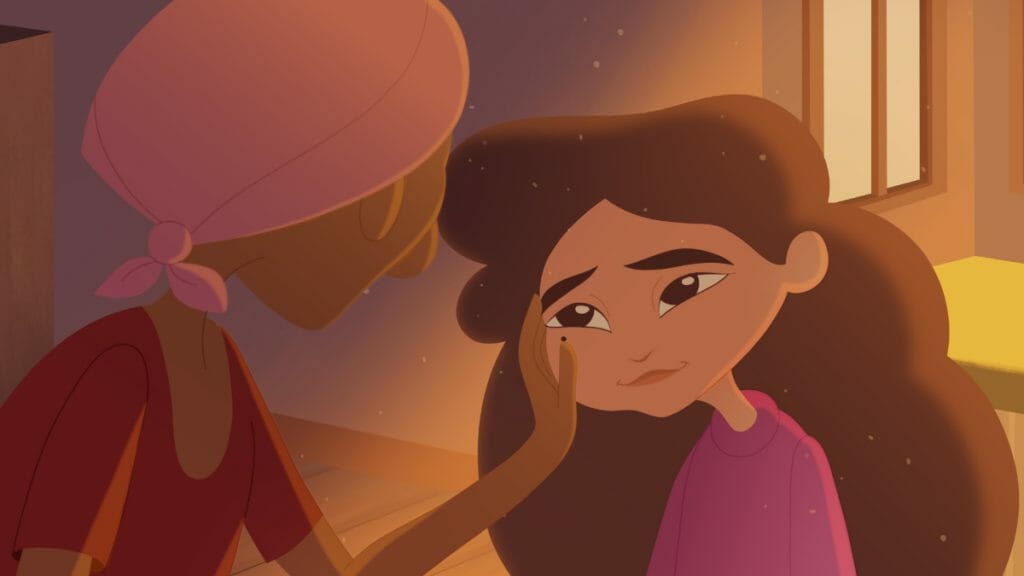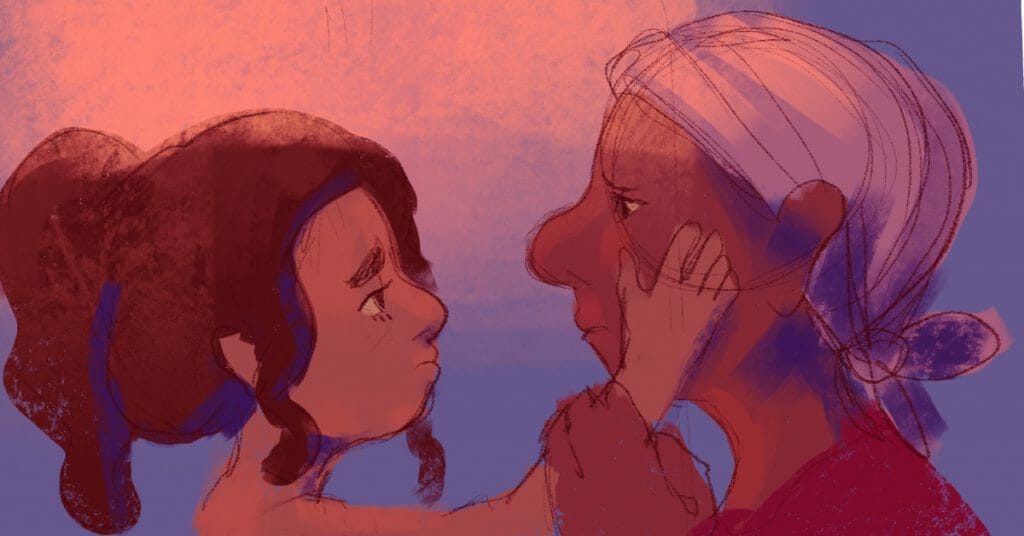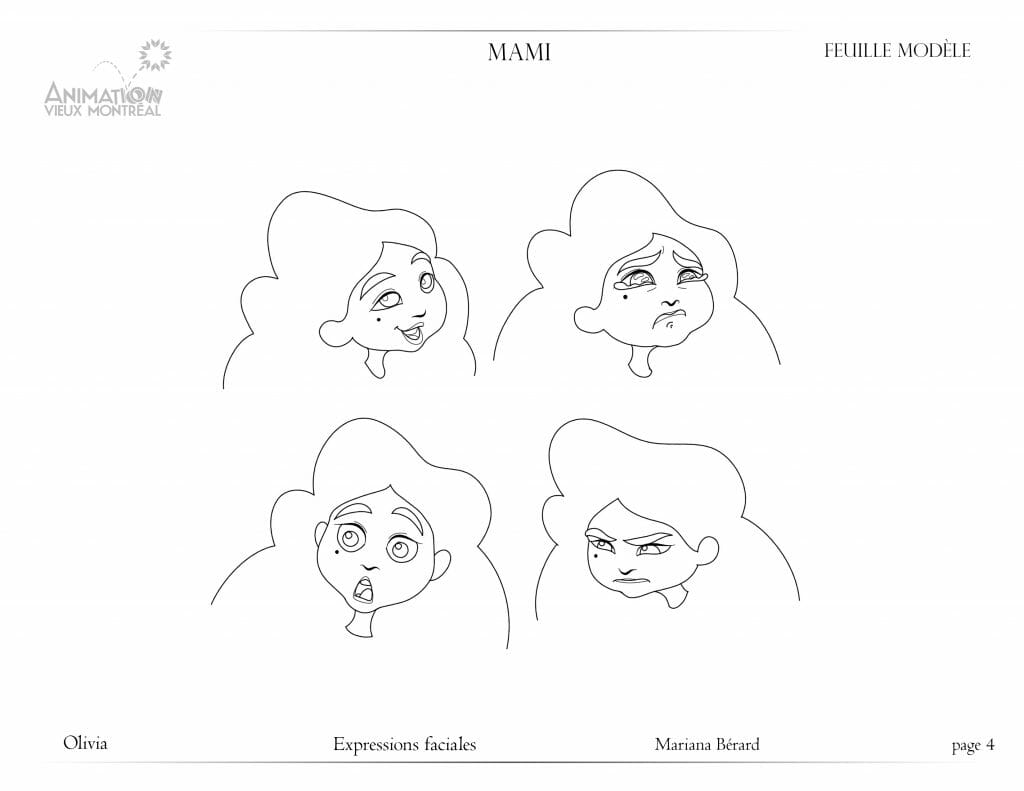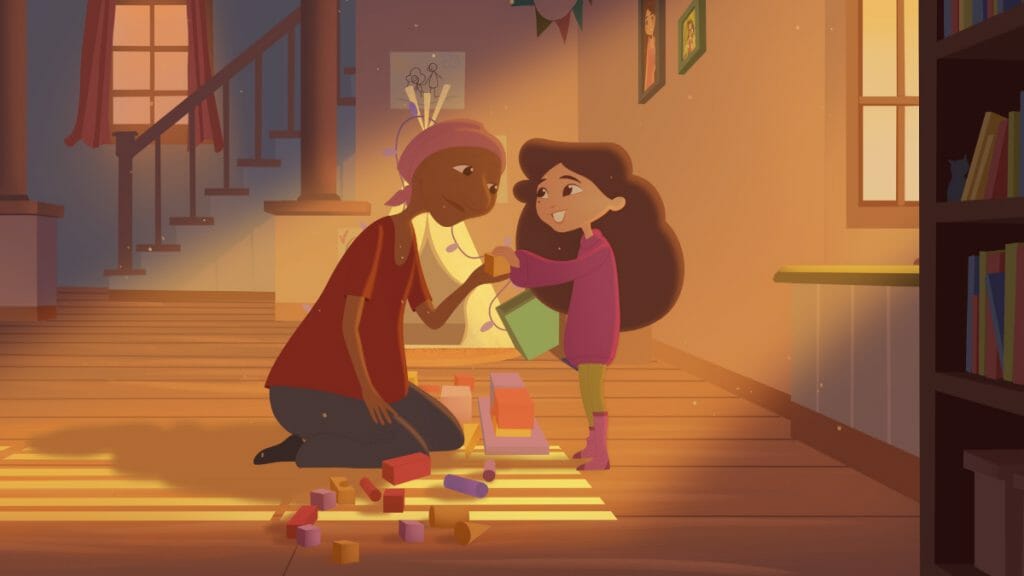Mariana Bérard is an animator creating emotional and atmospheric work with her warm and welcoming take on art direction and character design. With Mami, her thesis film, Mariana shares a personal story and touching tribute to her own mother; a sentiment she expresses beautifully and succinctly in the 30-second short.
Mariana is a graduate from Cégep du Vieux Montréal, one of the world’s leading animation schools, and is among the most accessible courses available for those seeking to enter the animation industry. Mami is part of a showcase of thesis films from the school’s animation program. Mariana has kindly agreed to answer questions about her process making the film.
Taking us through her character designs, Mariana unpacks the personality behind her two central characters, and how she creates mood and emotion through features and expression. She provides valuable insight into compositing, using Harmony’s nodes and gradients to render her characters. With a sensitive approach to her colour palette, Mariana frames her subject matter in a warm, comforting and hopeful atmosphere. A pensive soundtrack reflects the film’s atmosphere, composed in collaboration with a fellow student, that stands in for the absence of dialogue in the short. Poignant moments express the film’s story in Mariana’s charming animation. Watch Mami and read our full interview below.

Hi Mariana! Please give the film a short introduction…
Thank you for this interview! Mami is my thesis film from Cégep du Vieux-Montréal. It’s about a little girl trying to cope with her feelings about her mom who’s battling cancer.
The main character of my short is a little girl I named Olivia. She understands the gravity of her mom’s illness but struggles to understand the mix of emotions she feels about it. The second character is her mom, Alma; inspired by my own mother. Alma is portrayed as someone who is very tired, yet never fails to be there for her daughter.
What was the process of designing the characters?
The first thing I did was finding out what I wanted to convey from each character. I knew that since the short was only 30 seconds long, it had to be apparent in the mother’s design that she was sick. Before even drawing, I thought of her traits and personality. I wanted her to look tired, yet sweet and friendly. Then I started sketching thumbnails. That’s where I figured out the base shapes I would use to best fit her character. I followed the same process for Olivia, but this time focusing on her playful and emotional personality. I wanted her design to contrast with her mother’s, which is why I gave her lots of hair and thicker eyebrows.
When I figured out the essence of their design through the initial sketches, I made mood boards, sketched some dynamic poses and along the way I would find details to change like playing around with nose sizes or looking into more interesting shapes for Olivia’s hair. When I was satisfied with the result, I made their final reference sheets.

With no dialogue, we rely on movement and expressive features to carry the emotion. What can you tell us about your approach to expressing emotion?
Expressing emotion is tricky because you don’t want to overdo it, but you still want people to understand what’s going on in the character’s mind. I think it’s important to put yourself in your character’s shoes, to imagine what they are thinking at that moment.
A good way to find out how you want your character to express how they feel is to act it out yourself! Filming a couple versions of the same scene to use as reference is useful. You don’t even need to be a good actor; you can tweak details later while you’re animating.
What compositing effects can we see used in the short?
Most of the compositing effects in the short were used to render the characters. For my highlights, which I drew by hand, I used a matte-blur along with a blending node to achieve the look I wanted. I like the blending nodes a lot because I can choose from blending modes I’m already used to from Photoshop.
Along with the sharper highlights, I created a softer highlight on my characters using a gradient and the same two nodes as before to colour match. The last step was to add a colour-scale to make sure everything blended well together.

What was your thinking behind the colour palette you used?
Since the subject of the film is quite heavy, it was important to me to create a warmer ambience to balance it out. I didn’t want my film to be gloomy and depressing, but rather bittersweet. I decided on shades of pink and purple that I warmed up with the yellow hue of the sunlight coming from the window. And I wanted it to feel like a warm embrace, something comforting despite the sadness of it all.
Similarly, what effects can we see used to create the atmosphere and lighting of the characters’ home?
For the lighting, I used blending, transparency, and blur twice. Each with a different blending mode that I stacked together to create the desired result. I also used a particle system that was built beforehand to add little specks of dust floating in the background.

Are there any other important animation techniques used in Mami?
I did a bit of cutout animation during Olivia’s flashback sequence, with illustrations I drew in Photoshop. I made sure to separate what I wanted to rig on different layers before importing it on Harmony. And I think that the slight movements helped the sequence be more dynamic and appealing.
The film’s emotional qualities echo in sombre but beautiful music. How did you animate to this soundtrack?
I was lucky enough to be paired with an amazing musician for this project. Her name is Claire Laroze. I talked to her about the kind of music I was looking for and sent her the rough draft of my film beforehand, so she could make a sample of the music timed to it. I didn’t animate to the music, rather she composed it for my animation. The end result was more than I could’ve hoped for. She did an outstanding job at making my short even more emotional.

What was the biggest challenge on Mami?
The biggest challenge, in my opinion, was to find out how to tell such an emotional story within 30 seconds. Emotions build up over time, and I didn’t have much of it. My ideas were very scattered at first and I wasn’t sure if I would be able to truly touch people with my story. I was scared my short would feel rushed.
Thankfully, my teachers and classmates gave me great ideas and advice to better shape my story so it wasn’t too fast paced.
Mami was part of a thesis film showcase. How would you describe your experience as a student at Cégep du Vieux Montréal?
I loved studying at Cégep du Vieux Montréal. My teachers were amazing. They were so understanding and extremely dedicated to our success. They taught me so much during my three years as a student, I have much to thank them for. I think we sadly missed out on a few things because of the pandemic, but even so it was a wonderful experience and I met many amazing people. I’m incredibly glad I had the opportunity to study animation in such a lively environment.

How did you decide on Mami for your thesis film?
My mom was battling cancer when I started studying at the Cegep. I decided to create a short based on my experience to keep her memory alive. I wanted to create something beautiful out of this painful situation, but most of all I wanted this short to be a gift for her. Kind of a thank you for being an awesome mom despite everything.
What advice do you have for others hoping to study animation?
It’s going to sound cheesy, but it’s to never give up. Always keep practicing. It’s easy to get discouraged and feel like you’re not good enough, but instead of focusing on what you don’t know, try focusing on what you can learn. Don’t be shy to ask for tips from others and make sure you keep that passion for drawing alive. With passion and perseverance, you can go a long way!
- Did you enjoy Mami? Be sure to watch all of Cégep du Vieux Montréal’s 2022 thesis films through the school’s official gallery.
- Planning your thesis film? Toon Boom Animation offers discounted licenses for Harmony and Storyboard Pro to students.
The post Mariana Bérard on setting the scene with Mami appeared first on Toon Boom Animation.
Courtesy: https://www.toonboom.com/mariana-berard-on-setting-the-scene-with-mami






